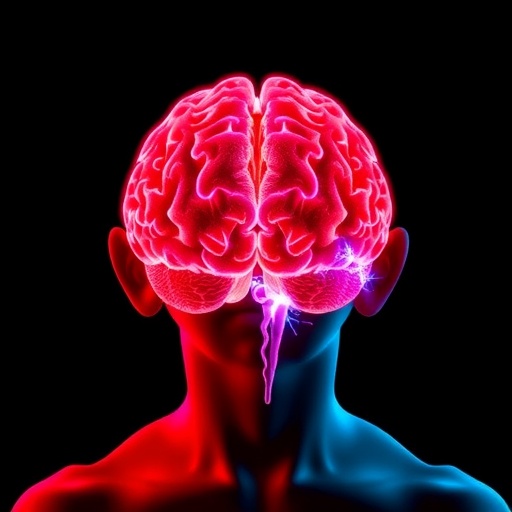In an exciting breakthrough that promises to deepen our understanding of Attention Deficit Hyperactivity Disorder (ADHD), a team of neuroscientists has unveiled compelling evidence about how transcranial direct current stimulation (tDCS) can influence neural indicators associated with reward processing and attentional control in children diagnosed with ADHD. This pioneering research, recently published in Translational Psychiatry, sheds light on the neurophysiological mechanisms underpinning behavioral improvements following non-invasive brain stimulation, and could pave the way for innovative therapeutic strategies that transcend the limitations of traditional pharmacological treatments.
ADHD, a neurodevelopmental disorder that affects approximately 5-7% of children worldwide, is characterized by symptoms such as inattention, hyperactivity, and impulsivity. While stimulant medications like methylphenidate have long been the frontline approach for management, growing concerns about side effects and variable efficacy have spurred the search for alternative interventions. This study by Vöckel, Pokorny, Rossberg, and colleagues boldly explores the potential of modulating neurocognitive processes through tDCS, a technique that delivers low electrical currents via scalp electrodes to subtly alter brain excitability and synaptic plasticity.
Central to the investigation was the measurement of reward positivity (RewP), an event-related potential (ERP) component detectable via electroencephalography (EEG) that reflects the brain’s response to positive feedback and reinforcement signals. Past research has implicated dysregulated reward sensitivity in ADHD pathophysiology, linking diminished reward positivity with motivational deficits and impaired behavioral adaptation. The authors employed sophisticated EEG paradigms to track RewP amplitude changes induced by tDCS, thereby offering a direct window into dynamic shifts in reward processing networks.
Complementing this neural assessment, the team also monitored spontaneous blink rates, a physiological proxy for central dopaminergic activity, which plays a pivotal role in executive function and attentional regulation. The rationale is grounded in the intricate relationship between dopamine signaling, motivation, and cognitive control—domains often perturbed in ADHD. By integrating blink rate analyses with ERP recordings, the researchers captured a comprehensive picture of the neuromodulatory impact exerted by tDCS on dopamine-dependent circuitry.
The methodology involved applying anodal tDCS over the dorsolateral prefrontal cortex (DLPFC), a brain region implicated in working memory, attentional processes, and inhibition control. Anodal stimulation is thought to increase cortical excitability, potentially normalizing the hypoactive prefrontal regions commonly observed in ADHD. The study design included both online stimulation assessments—conducted during tDCS—and offline evaluations measured immediately following the cessation of stimulation, enabling insights into both acute and short-term after-effects.
Results demonstrated a significant modulation of RewP amplitudes during and after tDCS sessions, indicating enhanced reward sensitivity and improved processing of positive feedback. These neurophysiological changes correlated with altered blink rates, further supporting the hypothesis that transcranial stimulation can influence dopaminergic function in key neural circuits disrupted in ADHD. Such findings not only validate the mechanistic underpinnings of tDCS but also suggest that neurofeedback through non-invasive stimulation may recalibrate motivational systems, which are critical for goal-directed behavior in children with ADHD.
Importantly, this study’s translational relevance cannot be overstated. By bridging neurophysiological markers with potential clinical outcomes, it lays the groundwork for tailored interventions that harness brain plasticity to mitigate core symptomatology. The non-pharmacological nature of tDCS offers an attractive adjunct or alternative for individuals who are non-responsive or intolerant to medications, opening new horizons for multidisciplinary ADHD treatment paradigms.
Moreover, the implications extend beyond ADHD, as reward processing deficits and dopaminergic dysregulation are hallmarks of multiple psychiatric conditions, including depression, schizophrenia, and substance use disorders. Understanding how tDCS modulates these pathways may catalyze broader applications of neuromodulation technologies in personalized mental health care.
While the findings are promising, the authors are cautious in acknowledging the need for larger, longitudinal studies to establish sustained efficacy and optimize stimulation parameters. Safety considerations, especially in pediatric populations, remain paramount, though the low-intensity currents used in tDCS have generally been well-tolerated in prior research. Advances in neuroimaging and computational modeling could further refine electrode placements and dosimetry, enhancing therapeutic precision.
From a neurodevelopmental perspective, the plastic brain of a child presents an opportune window for intervention. The capacity of tDCS to modulate synaptic transmission and network connectivity may influence developmental trajectories, potentially correcting aberrant patterns before they consolidate. This aspect raises exciting prospects for early intervention strategies that could profoundly alter long-term outcomes for children with ADHD.
The interplay between reward positivity and blink rate also provides fertile ground for future biomarker research. Real-time monitoring of these metrics could serve as objective indicators for treatment responsiveness, enabling adaptive protocols that tailor stimulation intensity and duration to individual neurophysiological profiles. Such a move towards precision neuromodulation aligns with contemporary trends in neuroscience and psychiatry.
In conclusion, this cutting-edge study offers a compelling proof-of-concept that non-invasive brain stimulation can rewire dysfunctional reward and attentional systems in children with ADHD. As research continues to unravel the complexities of brain-behavior relationships, interventions like tDCS stand at the frontier of innovation, promising safer, more effective, and personalized therapeutic options. The broad impact of these findings invigorates hope for millions affected by ADHD and underscores the transformative potential of harnessing brain plasticity through emerging neurotechnologies.
Subject of Research:
Article Title:
Article References: Vöckel, J., Pokorny, L., Rossberg, R. et al. Modulation of reward positivity and blink rate in children with attention deficit hyperactivity disorder (ADHD) during and following transcranial direct current stimulation. Transl Psychiatry (2025). https://doi.org/10.1038/s41398-025-03720-w
Image Credits: AI Generated
DOI: https://doi.org/10.1038/s41398-025-03720-w
Keywords: transcranial direct current stimulation, ADHD, reward positivity, blink rate, dopamine, neuromodulation, pediatric neuropsychiatry




